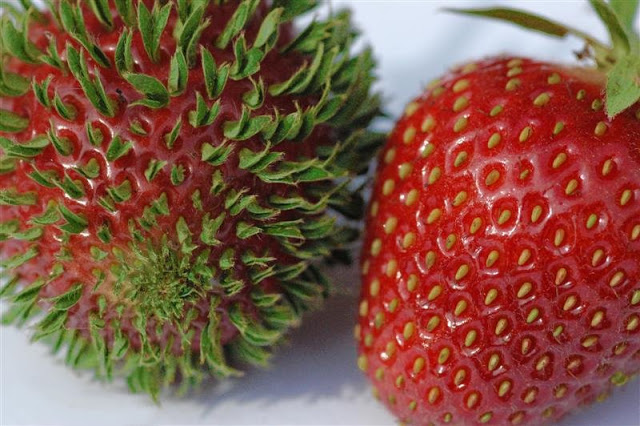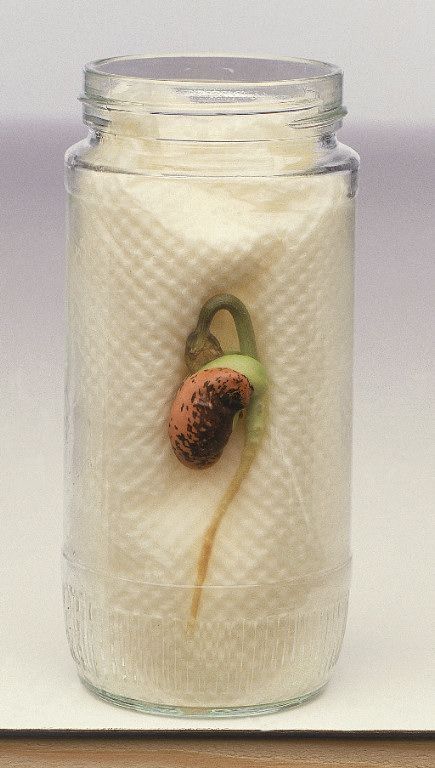
Seeds Feed the World . . . from rice to corn to beans!
There are many kinds of plants and most have seeds that under the right conditions will grow a plant just like the one that the seeds came from… Seeds look dead, but they are little packages of life.
Seeds may be as small as a speck of dust or as large as a football. There are small seeds that produce large plants and large seeds that produce small plants. The average size of a seed is about the size of a rice kernel. The largest seed is the coconut that can be as heavy as 50 lbs.
Seeds come in many different kinds of seed packages. Some may contain only one seed and some may contain thousands. The seeds may be covered by a husk (corn), skin (cherry), pod (pea), rind (lemon), peel (banana), shell (nut), or hull (grain). Seeds may also be inside a pit or stone such as in the peach or cherry.
Seed packages come in many shapes and sizes such as fruits, nuts, and pods and cones. Some grow quickly and some grow very slowly. Some will die if they are planted too deep in the soil. Some require a freeze and some constant warmth or great heat to germinate and sprout.
There are many ingenious ways that seeds travel. Birds that eat them deposit them elsewhere, they are carried by the wind or ocean, are shot out of a pod, are buried by animals, or have barbs, hooks, or spines that stick to things. Some seeds have wings and hair!
For a seed to grow it must have just the right amount of water, soil, and sun. All seeds have a tiny plant inside, the embryo, with one or two seed leaves (the cotyledons.) All seeds have an endosperm, which is food for the new plant until it is established.
If the conditions are right the seed will germinate and sprout. Different kinds of seeds take a different amount of time to germinate. Seeds have seed coats and water causes the seed to swell inside creating pressure that cracks open the coat for the sprout to grow. First, a tiny root is sent down into the earth to drink water and get nutrients. Then a little stem reaches out for the sky and 2 small leaves (cotyledons) appear. The little seed has sprouted and the roots, stem, and leaves continue to grow. Soon little buds will appear and open into flowers.
Mostly insects pollinate flowers and then fertilization occurs. A little yellow pollen grain from the stamen of the flower lands on the pistil of the flower and grows a tube down to the ovary of the flower that holds the ovules or eggs. An ovule is fertilized and a seed is formed. Some seeds stay dormant through the winter till spring comes. Scientists have been able to sprout some seeds that have been dormant for a very long time. You can also propagate (make new plants from older plant parts) plants from stem, root or leaf cuttings and from layering.
What is the saddest seed? The weeping willow.
Why did the seed shiver? Because it lost its coat.
Sprouting Strawberry

Bean Sprout

Indian Corn Sprouting

